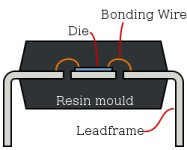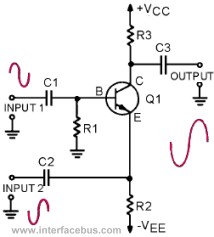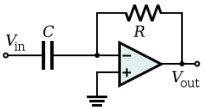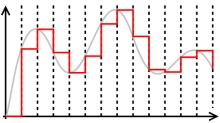Illustrated Dictionary of Electronics
"A"
"B"
"C",
"D",
"E",
"F",
"G",
"H",
"I",
"J",
"K",
"L",
"M",
"N",
"O",
"P",
"Q",
"R",
"S",
"T",
"U",
"V",
"W",
"X",
"Y",
"Z"
'Da', 'Db' to 'Deb', 'Dec' to 'Del', 'Dem' to 'Des',
'Det' to 'Dig', 'Dih' to 'Dis', 'Do' to 'Dru', 'Dry' to 'Dz',
Detection. The recovery of information from an electrical or electromagnetic signal. The separation of low-frequency (audio) intelligence from the high-frequency carrier.
Detector. A device that is responsive to the presence or absence of a stimulus. A mixer or converter in a superheterodyne receiver. A simple diode circuit used to detect the presents of a signal. [RF Phase Detector Manufacturers].
Deviation Distortion. Distortion in an FM receiver caused by inadequate bandwidth, amplitude modulation rejection or discriminator linearity.
Deviation Ratio. In a frequency modulation system, the ratio of the maximum frequency deviation of the carrier to the maximum modulating frequency of the system under specified conditions.
Device Under Test. [DUT] A component or device under going testing. [Example DUT Circuit]
Diac. A bidirectional [breakdown] trigger diode which is designed specifically to trigger a triac or SCR. A diode that conducts only when a breakdown voltage is reached. |  |
Dibit: A group of two bits. Note: The four possible
states for a dibit are 00, 01, 10, and 11.
Die. [Chip] A tiny piece of semiconductor material, separated from a semiconductor slice, on which one or more active electronic components are formed.
Die Bonding. The process of mounting a semiconductor chip [Semiconductor Die] to a package, a substrate or chip carrier. Also termed Wire Bonding which refers directly to bonding a lead wire to a semiconductor chip [see graphic]. A related page, for additional reference, covering PCB Terms and Definitions.
Dielectric. An insulating (non-conducting) medium. A substance in which an electric field
may be maintained with zero or near-zero power dissipation, i.e., the electrical conductivity is zero or near zero. An insulator; a term applied to the insulating material between the plates of a capacitor. Any insulating medium that intervenes between two conductors. A material that, having the property required to establish an electric field, is recoverable in whole or in part as electric energy.
Dielectric Breakdown. The rupture of an insulating material when the electric stress exceeds the dielectric
strength.
Dielectric Constant. The ratio of a given dielectric to the dielectric value of air. The property of an insulation
which determines the electrostatic energy stored per unit volume for unit potential gradient. That property of a dielectric that determines the electrostatic energy stored per unit volume for a unit potential gradient. Permittivity is the preferred term.
Dielectric Field. The space between and around charged bodies in which their influence is felt.
Also called Electric Field of Force or an Electrostatic Field.
Dielectric Heating. The heating of an insulating material by a high-frequency electric field.
Dielectric Hystersis Loss. Power loss of a capacitor because of the changes in orientation of
electron orbits in the dielectric; the changes in orientation are caused by rapid reversal in polarity of line
voltage. The higher the frequency, the greater the loss.
Dielectric Leakage. Power loss of a capacitor because of the leakage of current through the
dielectric. Also relates to leakage resistance; the higher the leakage resistance, the lower the dielectric leakage.
Dielectric Loss. The power dissipated by a dielectric.
Dielectric Losses. The losses resulting from the heating effect on the dielectric material between
conductors.
Dielectric Strength. The ability of an insulator to withstand a potential difference without
breaking down (usually expressed in terms of voltage). The maximum potential gradient that a material can withstand without rupture. As a material property it usually is calculated by dividing the breakdown voltage by the thickness of the material between a pair of test electrodes. Dielectric Strength is usually expressed as volts/unit thickness.
Dielectric Withstanding Voltage. Maximum potential gradient that a dielectric material can withstand without failure.
Difference Amplifier. An amplifier that amplifies the difference between two inputs. A transistor difference amplifier is shown to the right. An amplifier designed to measure differential signals, otherwise known as a subtractor. An amplifier that ignores common mode signals on both inputs.
Difference Frequency. Beat Frequency. The difference between the oscillator frequency and the unknown audio frequency.
Difference of Potential. A voltage between two points.
Differential Amplifier. A circuit that amplifies the difference between two input signals. The example circuit is an Op-Amp configured as a Differential Amplifier, producing an output [Vout] which is the difference between inputs [V1 and V2].
Differential Encoding. Encoding in which signal significant conditions represent binary data, such as 0 and 1, and are represented as changes to succeeding values rather than with respect to a given reference [as in PSK].
Differential Input Voltage. [Vid] The difference between the two voltages applied to the input terminals of an amplifier. The
difference is considered positive when the non-inverting input is positive with respect to the inverting input and negative when
the inverting input is positive with respect to the non-inverting input.
Differential Interface. See Differential Pair.
Differential Pair. A pair of conductors with one line carrying the true version and the other line carrying the inverted version of the signal. Differential Pair Layout Guidelines.
Differential Phase-Shift Keying. [DPSK] Phase-shift keying that is used for digital transmission in which
the phase of the carrier is discretely varied in relation to the phase of the immediately preceding
signal element and in accordance with the data being transmitted.
Differential Switch. A semiconductor analog switch that contains at least on pair of Single Pole Single Throw [SPST] switches, with both switches being controlled by the same control signal. A component could contain any number of differential switch pairs. A differential switch may have any combination of Normally Open [NO] or Normally Closed [NC] contacts, as in NO/NO, NO/NC, or NC/NC switch positions. Read more on Analog Switches, including a graphic of a differential switch.
Differential Transceiver. A buffer or amplifier that transmits and receives differential signals. |  Differential Transceiver |
Differentiating Amplifier. A circuit that performs the derivative of an input signal. An Operational Amplifier [Op-Amp] is shown in the graphic.
Differentiator. A circuit which has an output voltage amplitude that is proportional to the derivative of the input voltage; refer to the operational amplifier circuit to the right. An LC circuit with the input applied to a resistor and the output taken across the inductor.
A series RC circuit whose input is applied to one side of the capacitor and output is taken across the resistor. The input frequency and RC values determines the output. |  RC Differentiating Circuit |
Diffration. The bending of waves (as light or RF) when the waves are met with some form of
obstruction.
Diffusion. The scattering of reflected light waves from an object, such as white paper. Controlled application of impurity atoms to a semiconductor substrate.
Digit. A symbol that represents one of the nonnegative integers smaller than the radix. For example, in
decimal notation a digit is one of the characters from 0 through 9.
Digital Isolator. A logic input and output buffer separated by a silicon dioxide (SiO2) insulation barrier. The insulation barrier provides galvanic isolation. |
 Isolation Buffer |
Digital Multiplexer. A device for combining several digital signals into an aggregate bit stream. An example integrated circuit; TTL 8 to 1 Multiplexer Circuit.
Digital Phase Modulation. Modulation in which the instantaneous phase of the modulated wave is shifted between a set of predetermined discrete values in accordance with the significant conditions of the modulating signal.
Digital Subscriber Line. [DSL] In Integrated Services Digital Networks (ISDN), equipment that provides full-duplex service on a single twisted metallic pair at a rate sufficient to support ISDN basic access and additional framing, timing recovery, and operational functions.
Digitize. Conversion of an analog signal into a digital signal carrying equivalent information.













